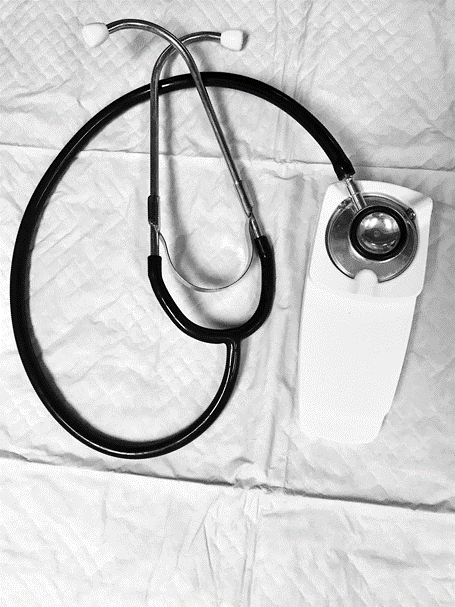Pocket UV-C device can reduce stethoscope contamination

A novel ultraviolet C device was effective in reducing contamination on stethoscope diaphragms from several pathogens, according to data from a recent study.
“Stethoscopes frequently become contaminated with pathogens but are rarely cleaned in clinical settings,” Curtis J. Donskey, MD, professor of medicine at Case Western University and staff infectious disease physician at the Louis Stokes Cleveland VA Medical Center, told Healio. “The idea behind the wearable UV device is that it could provide an automated UV-C cycle for the stethoscope diaphragm between each use.”
The device, called StetClean (egoHEALTH), is a pocket-sized box that can be carried in a front or side coat pocket and attached to a stethoscope diaphragm after each use, initiating an automatic 3- or 5-minute cycle of UV-C light generated by an LED, Donskey and colleagues explained.
They tested the device against one strain of MRSA, Clostridioides difficile spores, Candida auris and vancomycin-resistant Enterococcus (VRE) faecium by spreading the organisms on the stethoscopes, allowing them to airdry, and then exposing them to the 3-minute UV-C cycle. They also tested the ability of the device to eliminate MRSA transfer during patient exams.

According to the findings, using the device reduced the recovery of VRE, MRSA and C. auris by more than 2 log colony forming units (CFU), and C. difficile spores by 0.8 log CFU.
Additionally, among 45 MRSA-colonized patients included in the device assessment, the UV-C cycle reduced the frequency of MRSA recovery from 17 of 45 (38%) to 4 of 45 (9%).
“The UV device was easy to use and was effective in reducing contamination on stethoscope diaphragms,” Donskey said. “The device was not more effective than using antimicrobial wipes, but the fact that it provides an automated UV cycle could potentially result in increased compliance with stethoscope decontamination.”
Donskey and colleagues did not test the device against any gram-negative pathogens but said previous studies have demonstrated that UV-C is similarly effective against gram-positive and -negative organisms. – by Caitlyn Stulpin
Disclosures: Donskey reports receiving research grants from Boehringer Laboratories, Clorox, GOJO, Merck, PDI and Pfizer. All other authors report no relevant financial disclosures.
